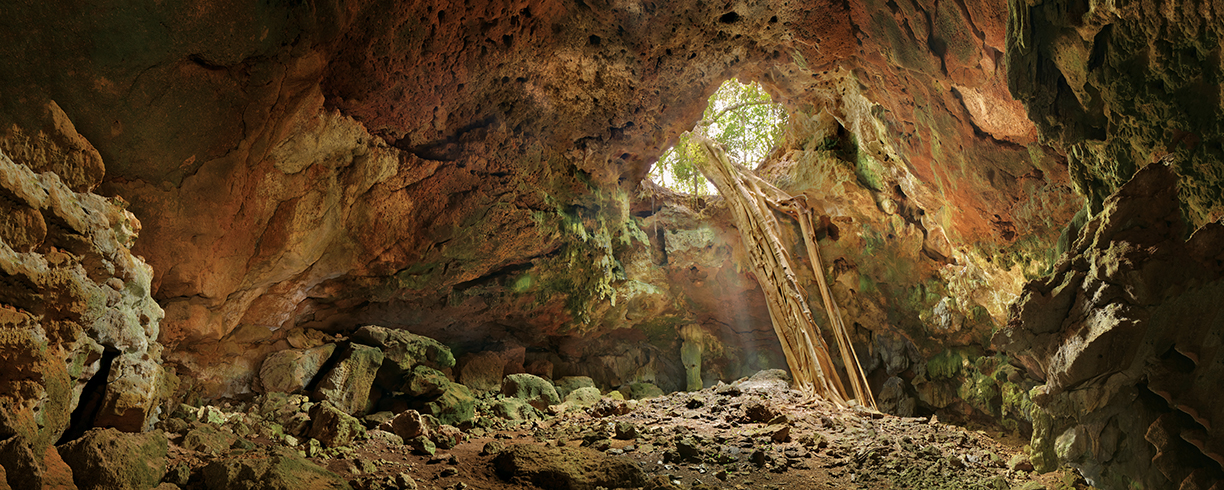
Bruce T. Martin uses photographs as words to create a vivid story about the culture and history of Mayan caves and cenotes of the Yucatan and more.
Photography by Bruce T. Martin
“In 1975, my father gave me a Pentad Spotomatic 35 mm camera, that I still have today,” says Bruce T. Martin, an American Fine Arts photographer. Even early on Martin didn’t pursue other careers or jobs outside of photography. Initially, his interest in cameras and capturing moments sparked when he was studying abroad in Europe 1976 and he’s been studying the art form ever since. Now, Martin explains that he takes a literary approach to his photography. “Images combine like words do in a sentence to tell a story,” he says. “My motivation is to use photography to document our world, explore our perceptions and question our viewpoints. ”
Martin grew up in Chautauqua County in western New York where he studied at Newhouse School of Communications at Syracuse University. His connection to photography continued to grow even building a darkroom in his parent’s basement and later began apprenticing for Irving Penn in New York City. “That experience opened my thinking to a whole new world of possibilities,” says Martin. Although the young photographer already had an affinity to landscape photography, his job at the Chautauqua County Office of Planning and Development led to a deep appreciation for architectural structures. One responsibility of Martin’s new job was to “contact the owners of interesting and important architectural structures in the community to secure permission to photograph their homes and buildings.”
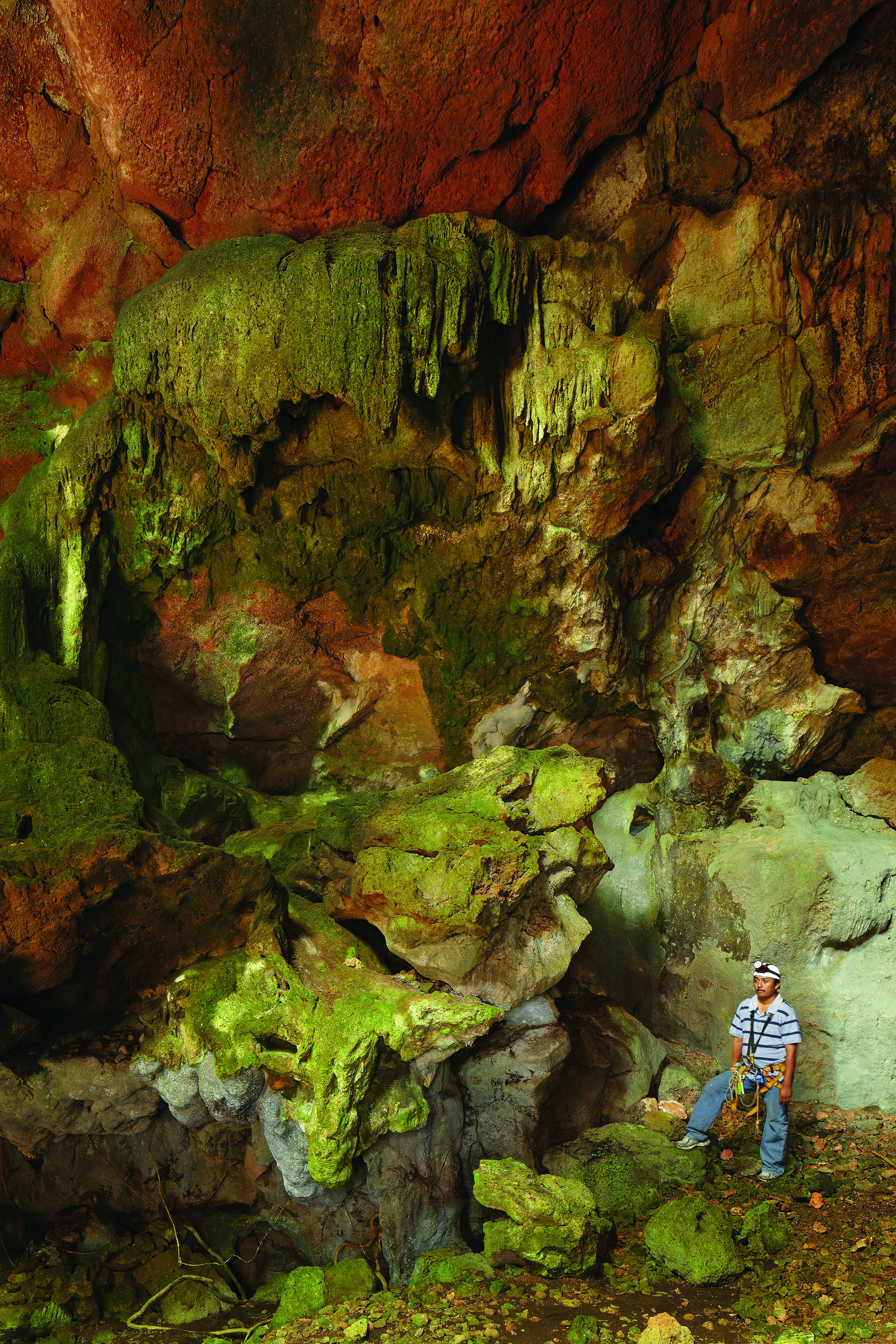
Gruata Milenio, Yucatán 2012
In terms of style, the photographer has “tried to combine the excellence of many photographers such as the technical mastery of Ansel Adams, the unique viewpoints of Andres Kertesz and the eloquence of Irving Penn, to name a few,” says Martin. However, from a technical point of view, Martin describes his approach as direct. “Positioning my camera in a place where I believe will reveal what I feel is most important to the image … then waiting for or creating the lighting that best reveals the detail and color to express the emotion and purpose of the image.”
As an artist, Martin is always working on a number of projects such as a larger portfolio of Boston cityscape and architecture. A series called “Fragment Landscape” is also in the works and involves overlapping images gathered in the White Mountains of New Hampshire. However, there has been one persisting project that Martin has been expanding on since 1987.
“I have been working on a project on the Maya of Central America, using historical documents, academic research, and current events in conjunction with my photography and recordings from the field,” according to Martin. The first phase of the project resulted in the book and exhibit, “Look Close See Far, A Cultural Portrait of Maya”, and has now progressed into the next component. “Seeking Sacred Landscapes, Maya Caves and Cenotes of the Yucatan”. Martin describes the project as, “beautiful, mysterious, and compelling.”
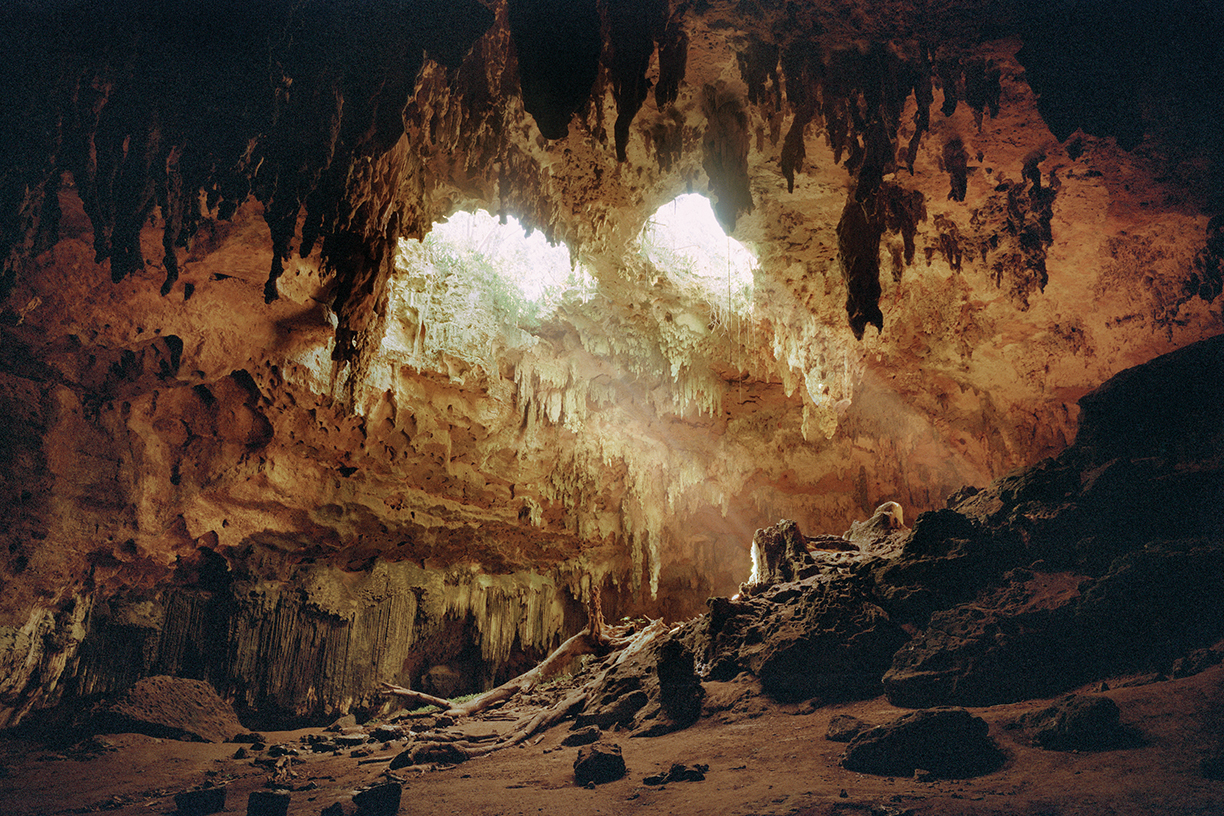
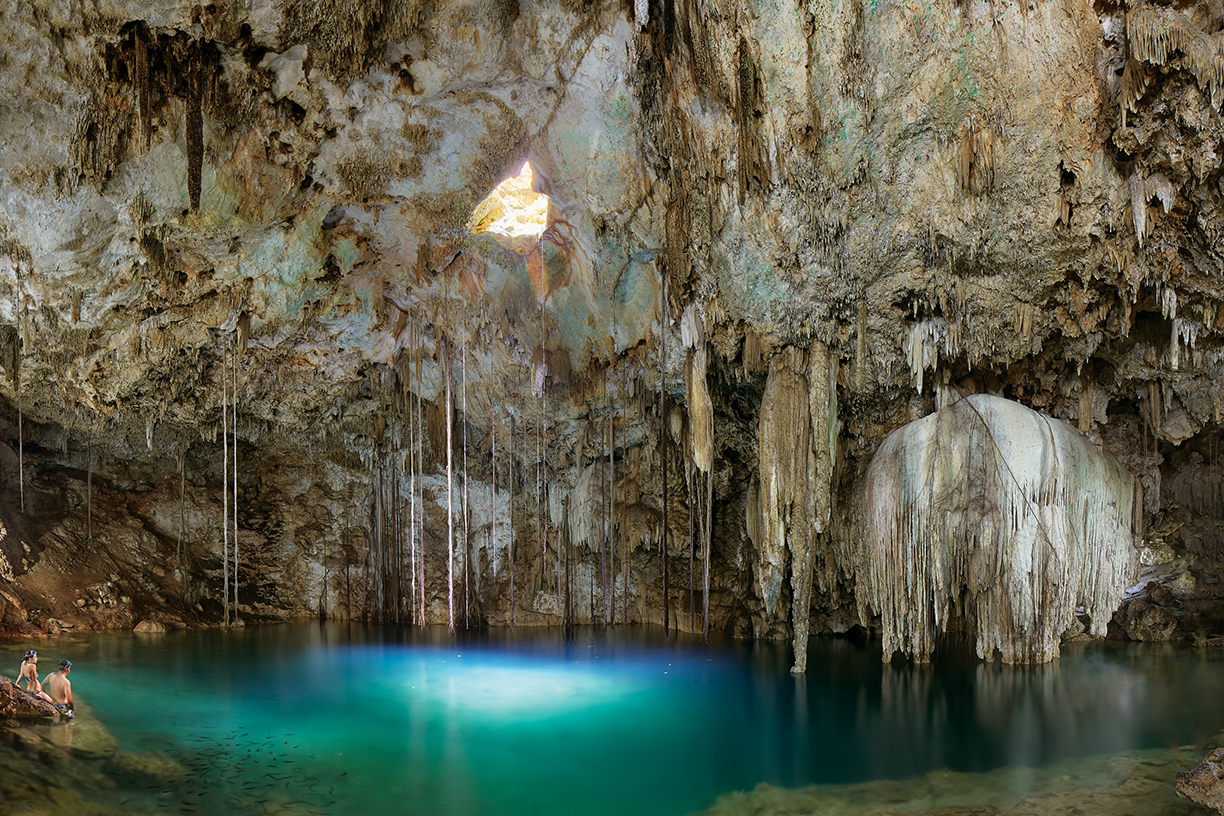
The series “Seeking Sacred Landscapes” is a combination of images of the Yucatan’s caves and cenotes with archeological, historical, and environmental essays by established authorities, according to the experienced photographer. Martin’s images compel you to look closer at the detail that has formed over the years within nature.
It’s hard to imagine what being in those types of caves would be like, but Martin describes it as a time full of anticipation. “Knowing that I will experience and learn something new each time fills my mind as I begin the descent into these underground chambers.” This experience has been building over the years. When the project first began Martin became interested in many of the Mayan’s core mythology concepts, which later led to his deeper understanding of the culture. “Harmony in life is a daily struggle. With the rapid development of recent years, many contrasting and violent viewpoints have been introduced, so that the Maya and their environment are being overwhelmed,” says Martin. “Surviving these disruptive influences and maintaining their cultural dignity is the challenge for an uncertain future that the Maya now face.”
The series “Seeking Sacred Landscapes” is a combination of images of the Yucatan’s caves and cenotes with archeological, historical, and environmental essays by established authorities, according to the experienced photographer. Martin’s images compel you to look closer at the detail that has formed over the years within nature.
It’s hard to imagine what being in those types of caves would be like, but Martin describes it as a time full of anticipation. “Knowing that I will experience and learn something new each time fills my mind as I begin the descent into these underground chambers.” This experience has been building over the years. When the project first began Martin became interested in many of the Mayan’s core mythology concepts, which later led to his deeper understanding of the culture. “Harmony in life is a daily struggle. With the rapid development of recent years, many contrasting and violent viewpoints have been introduced, so that the Maya and their environment are being overwhelmed,” says Martin. “Surviving these disruptive influences and maintaining their cultural dignity is the challenge for an uncertain future that the Maya now face.”
Through images that help to shape and tell a story, Martin is hoping that the series “Seeking Sacred Landscapes” will attract some attention to these struggles. “With a greater awareness of their issues, a more productive dialogue on the Maya and their land can begin, which will promote cultural diversity, protect their environment and respect for their fading traditions.”
Each part of Martin’s experience pushes him further and enhances his ability as an artist. A journey from architectural to landscape photography has proved there is more than what originally meets the eye, which can be seen in the details of his photos. According to Martin, “Each of these naturally-occurring, organic caverns and cenotes are unique yet similar architectural spaces that overwhelm your perceptions and preconceived notions of the world we live in.”
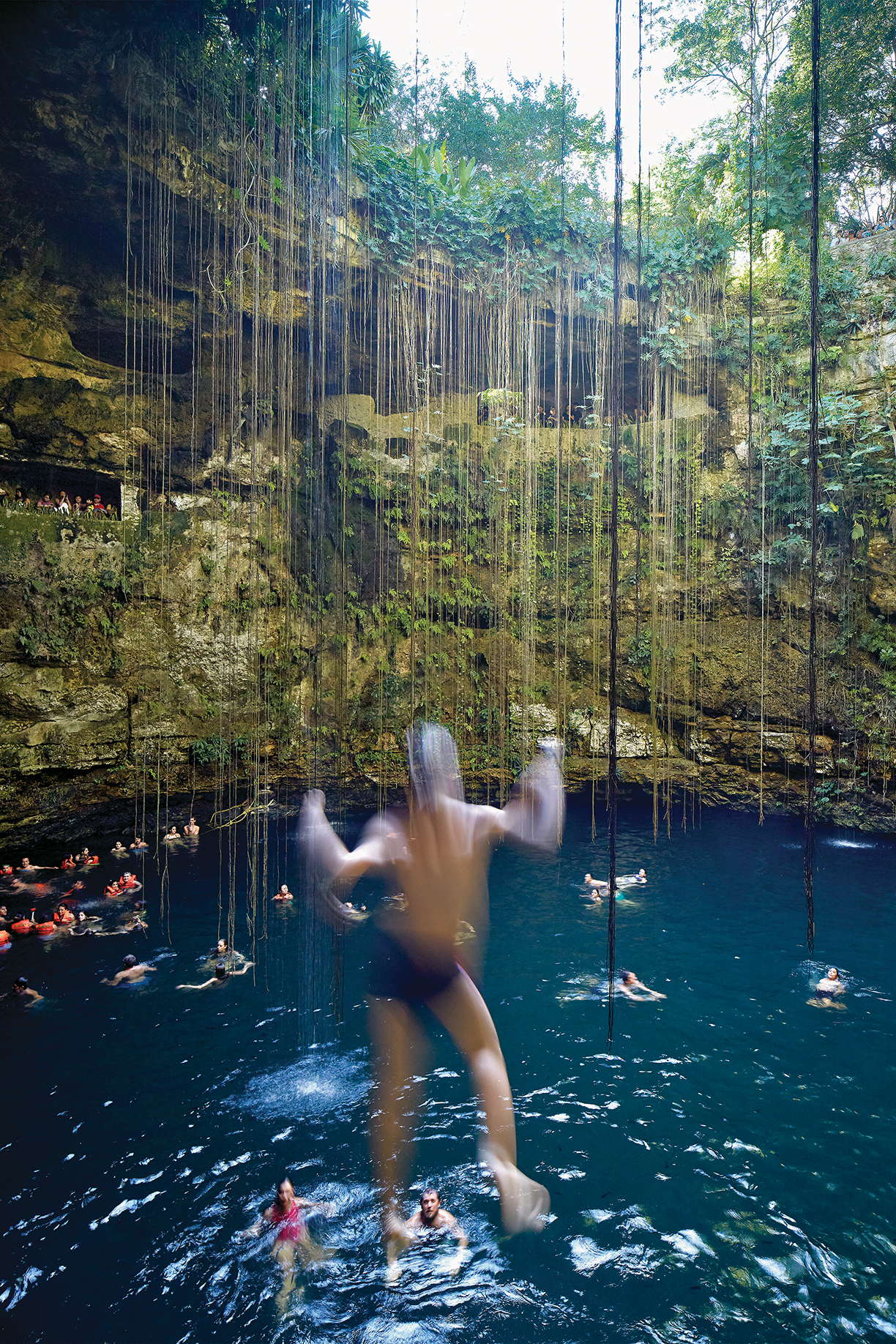
Cenote Ik kil, Yucatán, 2016.
For similiar content, try these articles, Embrace the Charm of Mexico City, Aman Resorts International to Debut First Destination in Mexico in 2020, Adventure Photographer seeking Ultimate Storytellers, Travel Designers.
This editorial originally appeared in The High End Spring 2019.

By Roger Grody
What’s on your bucket list? Climbing Mount Everest, playing golf with your favorite PGA pro, or cooking with a celebrity chef? These are the kinds of fantasies available for purchase at a unique online marketplace called IfOnly, which offers unique, modestly priced experiences in addition to life-changing adventures priced in the millions. Because a portion of the proceeds fund charitable causes, your real-life fantasies are actually helping others.
Founded in 2012 by tech entrepreneur Trevor Traina (currently the U.S. Ambassador to Austria), IfOnly is the kind of marketplace that could only exist through technology, but is rooted in an old-fashioned philanthropy. The platform collaborates with more than 250 nonprofits and charitable organizations, from Ronald McDonald House to the American Red Cross, Farm Aid to Share Our Strength. Adventures range from the arts (e.g. a personalized tour of the Art Institute of Chicago) to adrenaline rushes (e.g. racing a Lamborghini), and represent all price points.
IfOnly’s Vice President of Marketing & Growth Katelyn Watson reports, “We first gained traction with celebrities discovering these experiences were a great way to build a deeper connection with their fan base while supporting charities dear to them,” and notes it expanded from there. “Those interested in backstage passes to a Shania Twain concert ($2,500, supporting the singer’s own foundation) are the same people looking for something really cool to do over the weekend,” says Watson.


She cites baking macarons with a French pastry chef ($95), a private tour of a Frank Lloyd Wright landmark ($25) or getting up-close and personal with an endangered red panda at the San Francisco Zoo ($325) as affordable adventures. “Most of the experiences on IfOnly are impossible to find anywhere else, because we curate them personally with the talent or luminaries involved,” says Watson. Recently offered were exclusive World Cup watching parties — $3,250 netting chauffeur service, a pair of Pantofola d’Oro Italian leather soccer shoes and the company of British soccer legend Kevin Keegan — with donations benefitting the James Beard Foundation.
At least 5 percent of the price for an experience goes to the designated charity, but Watson reports many celebrities donate 100 percent and that the average contribution is almost 50 percent, with a small amount retained by IfOnly for administrative and marketing costs. The San Francisco-based organization is currently active in seven major U.S. markets, but expansion to hundreds of cities internationally is planned. The ability to offer experiences at travel destinations favored by their customers is envisioned as IfOnly’s natural evolution.
The concept is particularly popular with millennials, says Watson, who explains, “They’re not used to traditional means of giving and tend to focus their time and money on unique experiences,” but adds, “They also like to give something back.” IfOnly has limitless applications in the corporate world, for teambuilding adventures, employee retention and gift programs, suggests Watson.
IfOnly’s partners are pleased with their participation. “We were looking to reach potential millennial donors through new technology and digital experiences, which made IfOnly an ideal partner,” reports Maia Raposo, communications and marketing director of Waterkeeper Alliance, a nonprofit dedicated to preserving clean, drinkable water. “We’ve collaborated on social media initiatives, media outreach, and other marketing opportunities, helping us to get our brand recognized by a wide audience,” she adds.
www.ifonly.com












